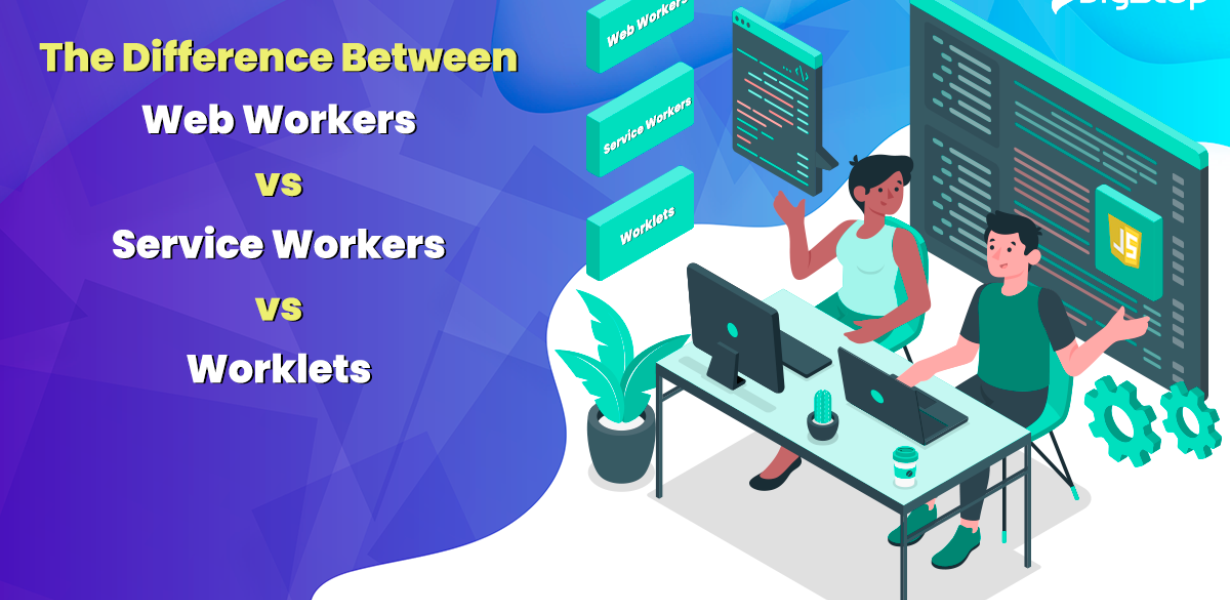
Harnessing the Power of Background Sync with Service Workers: Real-Time Updates Made Easy!
- Post
- August 8, 2023
- Progressive Web Apps, Service Workers, Web Technologies
- 0 Comments
In the digital landscape, where speed and real-time interactions reign supreme, website performance and user experience are paramount. Enter service workers, the unsung heroes of the web development world, enabling seamless offline experiences and real-time updates. In this comprehensive guide, we delve into the intricacies of service workers and their incredible potential to transform your web applications. Let’s embark on a journey to uncover the inner workings of these JavaScript wonders.
Understanding Service Workers: The Backbone of Progressive Web Apps (PWAs)
Service workers are JavaScript scripts that run in the background, independently of the web page, opening doors to a myriad of possibilities. They act as intermediaries between your web application and the network, intercepting and managing network requests, caching resources, and enabling offline access. In essence, service workers empower your web app to deliver consistent performance regardless of network conditions.
Key Points:
Service workers are event-driven scripts that allow developers to control network requests.
They operate independently from the main browser thread, improving performance.
The Magic of Real-Time Updates: Background Sync Explained
Imagine a scenario where a user is composing a critical message on a social media platform, and suddenly, the internet connection drops. With service workers and background sync, this frustrating experience becomes a thing of the past. Background sync allows you to capture user actions while offline and synchronize them when the connection is reestablished.
Key Points:
Background sync ensures that user actions are captured and synchronized with the server once connectivity is restored.
It enhances user engagement and reduces frustration by providing a seamless experience.
Implementing Background Sync: Step-by-Step Guide
Implementing background sync involves a series of steps that integrate seamlessly into your web application’s architecture.
Registering a Service Worker: Begin by registering a service worker in your application’s main JavaScript file. This process involves defining the service worker’s scope and specifying which files to cache for offline access.
Listening to Sync Events: Service workers can listen for specific sync events, such as “sync” or “periodicsync,” triggered by the browser when the device reconnects to the internet.
Capturing User Actions: Capture and store user actions during offline mode, such as form submissions or updates to user-generated content.
Synchronizing Data: When the device regains connectivity, the service worker triggers a sync event, allowing you to synchronize the captured data with the server.
Key Points:
Register a service worker, define sync events, and capture user actions during offline mode.
Synchronize data with the server once the connection is reestablished.
Benefits Beyond Real-Time Updates: Enhanced Performance and Offline Access
While real-time updates are a remarkable feature of service workers, their benefits extend further:
Improved Performance: By caching essential assets, service workers enable faster load times and reduced network usage, enhancing user experience.
Offline Access: Users can continue using your application even without an internet connection, promoting engagement and satisfaction.
Reduced Server Load: Cached resources lead to fewer server requests, lightening the server load and optimizing performance.
Common Pitfalls and Best Practices
Implementing service workers requires careful consideration of potential challenges and adherence to best practices:
Over-Caching: Be cautious not to over-cache resources, as outdated content can confuse users.
Security Concerns: Service workers can be vulnerable to man-in-the-middle attacks. Always use HTTPS to ensure secure communication.
Final Words
In the ever-evolving digital landscape, staying ahead requires harnessing the power of cutting-edge technologies. Service workers offer an avenue to elevate user experience, enabling real-time updates and offline access. By understanding their mechanisms and implementation, you unlock the potential to transform your web applications into responsive, user-friendly, and engaging experiences.
Commonly Asked Questions
Q1. What Are Service Workers?
Service workers are JavaScript scripts that run in the background of web applications, enabling offline access and real-time updates.
Q2. How Do Service Workers Enhance User Experience?
Service workers cache resources for faster load times, enable offline access, and facilitate seamless real-time updates.
Q3. What Is Background Sync?
Background sync allows web applications to capture user actions during offline mode and synchronize them with the server upon reconnection.
Q4. Can Service Workers Impact Performance?
Yes, service workers can significantly improve performance by reducing server requests, caching assets, and ensuring consistent user experiences.
Q5. Are There Security Considerations When Using Service Workers?
Absolutely. Employ HTTPS to secure communication and guard against potential security vulnerabilities, such as man-in-the-middle attacks.




